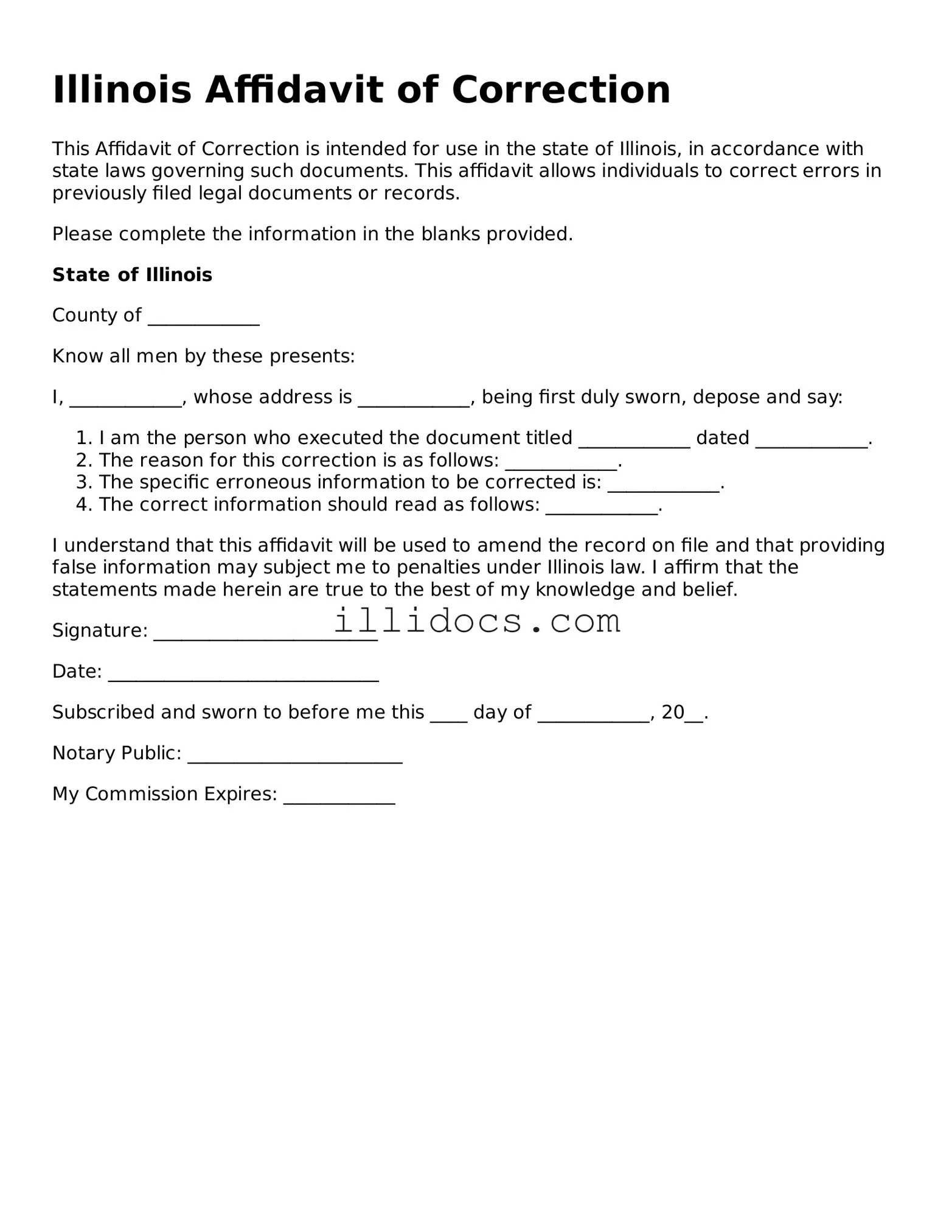What is the Illinois Affidavit of Correction form?
The Illinois Affidavit of Correction form is a legal document used to correct errors in previously recorded documents. This form allows individuals to amend mistakes such as typographical errors, incorrect names, or inaccurate property descriptions. By filing this affidavit, you ensure that the public record accurately reflects the true information, which can help avoid potential disputes in the future.
Who can file an Affidavit of Correction in Illinois?
Any individual or entity that has a vested interest in the document can file an Affidavit of Correction. This typically includes property owners, lienholders, or other parties involved in the original document. It is important that the person filing the affidavit has the authority to do so and that they are correcting information that directly pertains to them or their interests.
What information is required to complete the form?
To complete the Illinois Affidavit of Correction form, you will need to provide specific information about the original document. This includes the date of the original document, the type of document, and the book and page number where it was recorded. Additionally, you must clearly state the errors that need correction and provide the correct information. Signatures of the involved parties may also be necessary to validate the affidavit.
Where do I file the Affidavit of Correction?
The Affidavit of Correction must be filed with the same office where the original document was recorded. In most cases, this will be the county clerk's office or the recorder of deeds in the county where the property is located. It is advisable to check with the specific office for any additional requirements or procedures they may have.
Are there any fees associated with filing the Affidavit of Correction?
Yes, there are typically fees associated with filing an Affidavit of Correction. These fees can vary by county, so it is essential to check with the local recording office for the exact amount. Payment methods may also differ, so be prepared to follow their guidelines for submitting the fee along with your affidavit.
